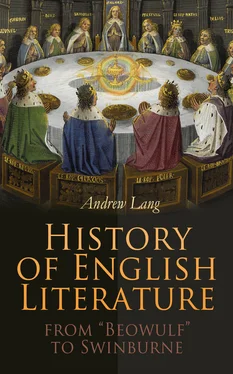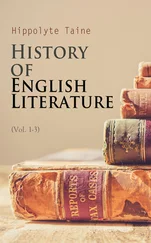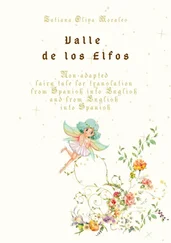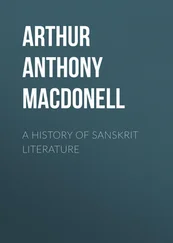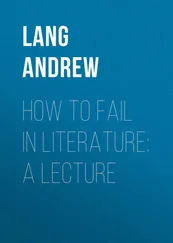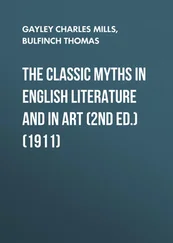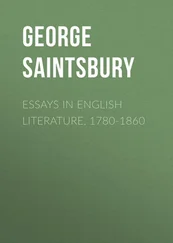The romance writers were by no means restricted to "matter of Britain," with Celtic traditions; or to "matter of France," the epics of Charlemagne and his peers, or even to "matter of Rome," ranging through all antiquity. Material came in from popular tales of all countries, and from recent historical events, as in the romance of Richard Cœur de Lion. In the fifteenth century there was a romance of Jeanne d'Arc, as fantastic as any; the matter of it survives partly in the prose of the "Chronique de Lorraine," and has drifted into "Henry VI," Pt. I. In France the most famous and fashionable novelists of the late twelfth century were Chrétien de Troyes and Benoît de Ste.-Maure, author of the great romance of Troy, whose manner, long-winded and elaborately courtly, was strangely revived by the French romancers of the years preceding Molière.
The earliest English romances, or novels of chivalrous adventures, are couched in metre. Among the first is "Sir Tristrem" (usually spelled Tristram); certainly this has been the most popular in modern times. Sir Walter Scott edited it, from the copy in the Auchinleck Manuscript (a collection of early poems once in the possession of Boswell of Auchinleck, father of Dr. Johnson's Boswell). 1
Sir Walter was persuaded that "Sir Tristrem" was written from local Celtic tradition, by the famed Thomas of Ercildoune, called the Rhymer. Thomas, who dwelt at Ercildoune (Earlstone on Leader water), was a neighbour, as it were, of Scott at Abbotsford; he died between 1286 and 1299, and he had great though obviously accidental fame, as a prophet.
The poem on Tristram begins with the words,
I was at Erceldoune
With Thomas spake I there,
There heard I rede in roune
Who Tristram gat and bare,
(that is, "I heard who the father and mother of Tristram were")
Who was King with croun;
And who him fostered yare;
And who was bold baroun.
As their elders ware,
Bi yere:—
Thomas tells in toun,
This auventours as thai ware.
The English poet uses this difficult stanza in place of the simple rhymes of a French original which knew nothing of Ercildoune. In similar stanzas, of French origin as usual, the whole romance is told. Throughout "Tomas" is mentioned as the source of the story—"as Tomas hath us taught".
There are fragments of an earlier French romance in which Tomas is also quoted as the source, and an early German version, by Godfrey of Strasbourg refers to Thomas of Britanie.
Scott was well aware that the story of Tristram was popular in France long before the time of Thomas of Ercildoune, but he liked to believe that Thomas collected Celtic traditions of Tristram from the people of Leaderdale and Tweeddale, though they, by 1220-1290, were English in blood and speech.
In the romance, Tristram is peerless in music, chess-playing, the fine art of hunting, and of cutting up the deer; and his main virtue is constancy to Iseult, wife of his uncle, King Mark. This unfortunate prince is not the crafty avenger of his own wrongs, as in Malory's "Morte d'Arthur," but a guileless, good-natured being, constantly and ludicrously deceived. Iseult is treacherous and cruel, but everything is forgiven to her, and, as the manuscript, is defective, we do not know how the poet handled the close of the tale, the episode of the other Iseult "of the white hands". Scott finished the tale in the metre and language of the original. Tristram is dying in Brittany, only Iseult of Cornwall can heal him, as only Œnone could heal Paris. Tristram sends for her, the vessel is to carry white sails if it bears her; black, if it does not. The idea is from the Greek saga of Theseus. The second Iseult, wife of Tristram, falsely reports that the sails of the vessel are black. Tristram dies, and Iseult of Cornwall falls dead when she beholds him.
Swiche lovers als thei
Neer shall be moe,"
concludes Sir Walter.
In "Havelok" we naturally expect, thinking of our historical hero Havelock, to find a true English romance. The scene is partly in England, the tale is of a Danish king's son kept out of his own by one of the most fearsome guardians of romance (who chops up the hero's little sisters), is saved by the thrall Grim, who was ordered to murder him, and, after adventures as a kitchen lad, marries an English princess who is in the hands of another usurper. The story is truly English in sentiment and style. The poet curses Godard, the murderous oppressor of Havelok, in a thoroughly satisfactory fashion. The noble birth of the hero is recognized by the "battle-flame" of the ancient Irish romances; the flame with which Athene crowns Achilles in Homer shines round Havelok. This light warns Grim not to drown Havelok, and teaches the oppressed lady whom he wins that her wooer is no kitchen-knave but a prince in disguise. The story has abundance of spirit, and may be read with more pleasure than the romance of the perfidies of Iseult. It is written in no affected and entangled rhymes, but in rhyming couplets.
In "King Horn" we have a novel that must have been reckoned most satisfactory. The course of true love is interrupted by accidents which caused the utmost anxiety to the readers, who probably looked at the end to see "if she got him". "He" was Prince Horn, son of Murry, King of Saddene; the realm is "by west," and is invaded by Saracens. They spare Horn, for his beauty's sake, but launch him in a boat with his friends, Athulf and Fikenhild; his land they overrun, and disestablish the Church, being themselves professors of the Moslem religion. Horn drifts to the shore of the realm of Westerness, under King Aylmar. Here the king's daughter Rymenhild, falls in love with Horn, but cannot have an opportunity of declaring her passion. In the romances the lady, as a rule, begins the wooing. By Athelbrus, the steward, Athulf is brought to her bower, apparently in the dark, for she addresses him as Horn.
"Horn" quoth she, "well long
I have thee loved strong."
Athulf undeceives her; Horn is brought, in the absence of King Aylmar: Rymenhild again speaks the secret of her heart, and when Horn alludes to their unequal ranks, she faints away—one of the earliest faints executed by any heroine in English fiction. Horn kisses her into consciousness, and she devises that he shall be knighted. The king consents, giving him a ring which secures him from "dread of dunts," sends him to win glory. Horn at once kills a hundred Saracens. But Fikenhild, his false friend, finds Horn consoling Rymenhild for a dream of a great fish that burst her landing net. Fikenhild, in jealousy, warns King Aylmar, who discovers Horn and his daughter embracing. Horn is exiled, and bids Rymenhild wait seven years, and then marry if she will. Like the daughter of "that Turk," in "The Loving Ballad of Lord Bateman," she "takes a vow and keeps it strong".
At another court Horn, now styled Cutberd, not only slays giants, but encounters and routs the very Saracens who had invaded his father's dominions. The king of the country offers Horn his daughter and realm: he, however, is true to his vow, but, at the end of seven years, Rymenhild is betrothed to a king. She sends a boy to Horn with a message. In returning with Horn's reply the boy is drowned; the princess finds his dead body. Disguised as a palmer, like Ivanhoe, Horn returns to Westerness, and, like Odysseus, sits on the ground at the palace, as a beggar. Rymenhild does not recognize him, asks him if he has met Horn, and is shown her own ring. Horn, she is told, is dead. She had secreted a knife to kill her bridegroom, like the Bride of Lammermoor. Then Horn reveals himself, the pair are wedded, but he has still to recover his own kingdom. This he does, but Fikenhild has carried off Rymenhild. Disguised as minstrels, Horn and his friends surprise him in his new castle, and all ends happily.
Читать дальше
